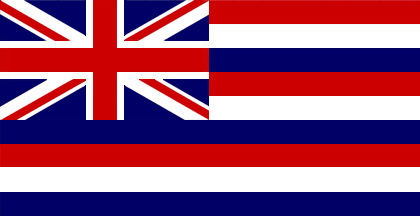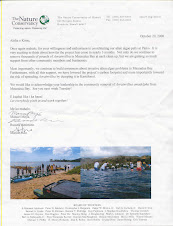This last Saturday, Oct. 13 - a group of us from Malama Maunalua led by Alyssa Miller and Christina Ryder of Ducks Unlimited ventured into Paiko Lagoon Wildlife Sanctuary for a sightseeing tour and a discussion of the flora & fauna of the area. We also were able to clean litter from the area and pull-up some of the invasive seaweed growing in the lagoon.
Alyssa had described some of the previous work that has been done in the area including removal of some of the invasive plants and trees. There removal provides space and less competition for some of the native plants to grow in the region such as the Pohuehue vine and Milo trees which are trying to keep steadfast on the beach area. Also, how Paiko Peninsula has been historically very unstable with sands constantly shifting over time.
Christina mentioned that the lagoon is very productive in regards to providing safe grounds for pua or offspring of certain fish such as oio, mullet, aholehole & kaku (barracuda). Baby mullet were seen jumping and swimming in schools throughout the area.
Not many birds were seen in the lagoon while we were there except for some Kolea (Pacific Golden Plover) & possibly a couple of 'Ulili (Wandering Tattler) off at a distance. No Ae'o (Hawaiian Stilt) or "Auku'u (Black Crowned Night Heron) were seen; although, I often do see them in the lagoon and in other areas in Maunalua such as the canals in the valleys leading to Kuapa pond. "Ulili are common to see on the beach and mud flats off Kuli'ou'ou Beach Park.
Mostly invasive seaweed was found in the lagoon such as the Gracilaria (Gorilla Ogo), Avrainvillea (Leather Mudweed) and the Acanthophora (Prickly Seaweed). Where the mudweed was growing it was quite soft & muddy. Your feet sink into the sediment making it difficult to walk at times. Although, mostly all of the seaweed I observed was invasive - I did see a small pocket of Limu Palahalaha. Another green seaweed was growing in small areas in which I cannot remember the name other than it has "tax" in part of its scientific name. The leaves look like small palm fronds. I don't know if this particular seaweed is an invasive or native seaweed. It was growing right at the inlet into the lagoon. There is some Limu 'Ele'ele growing on rocks outside the lagoon; however, I didn't see any inside the lagoon.
The Avrainvillea seaweed which is growing thickly on the flats outside the lagoon I had heard is not liked by fish. From my observations in this area, this seems to be true. I never see much fish in the area where it is growing other than a periodic barracuda.
Paiko Lagoon is a beautiful place and very unique to this area now. I view it as sort of a last vestige of what was once common in this area before Kuapa pond was dredged and developed by Henry Kaiser.




















